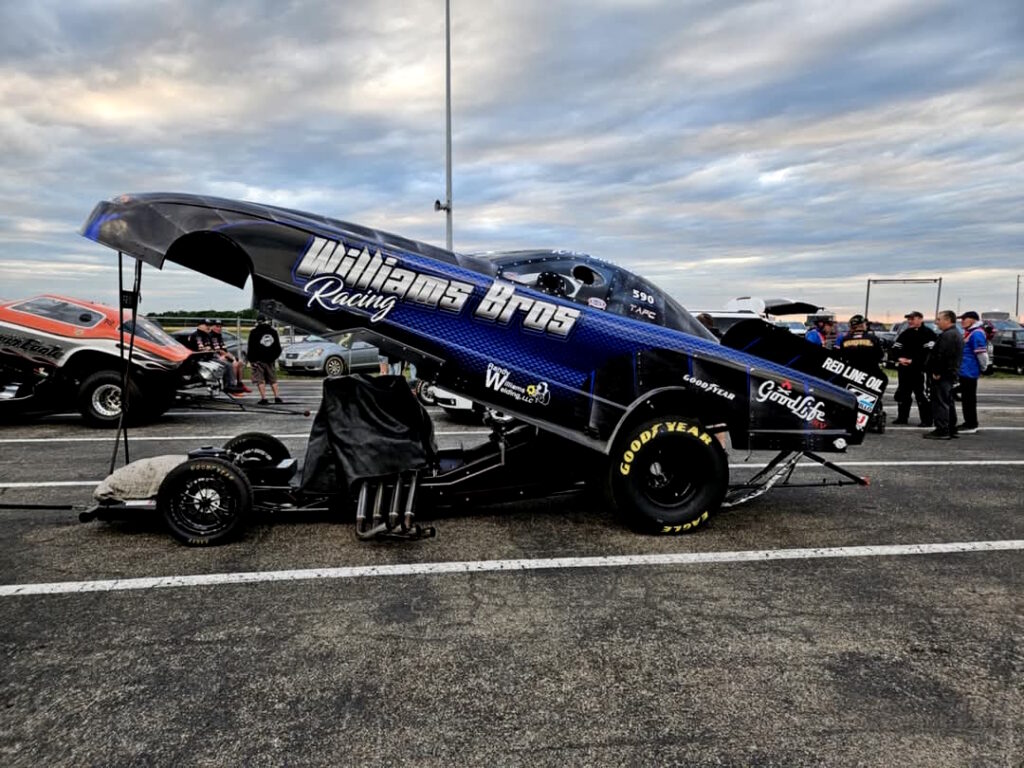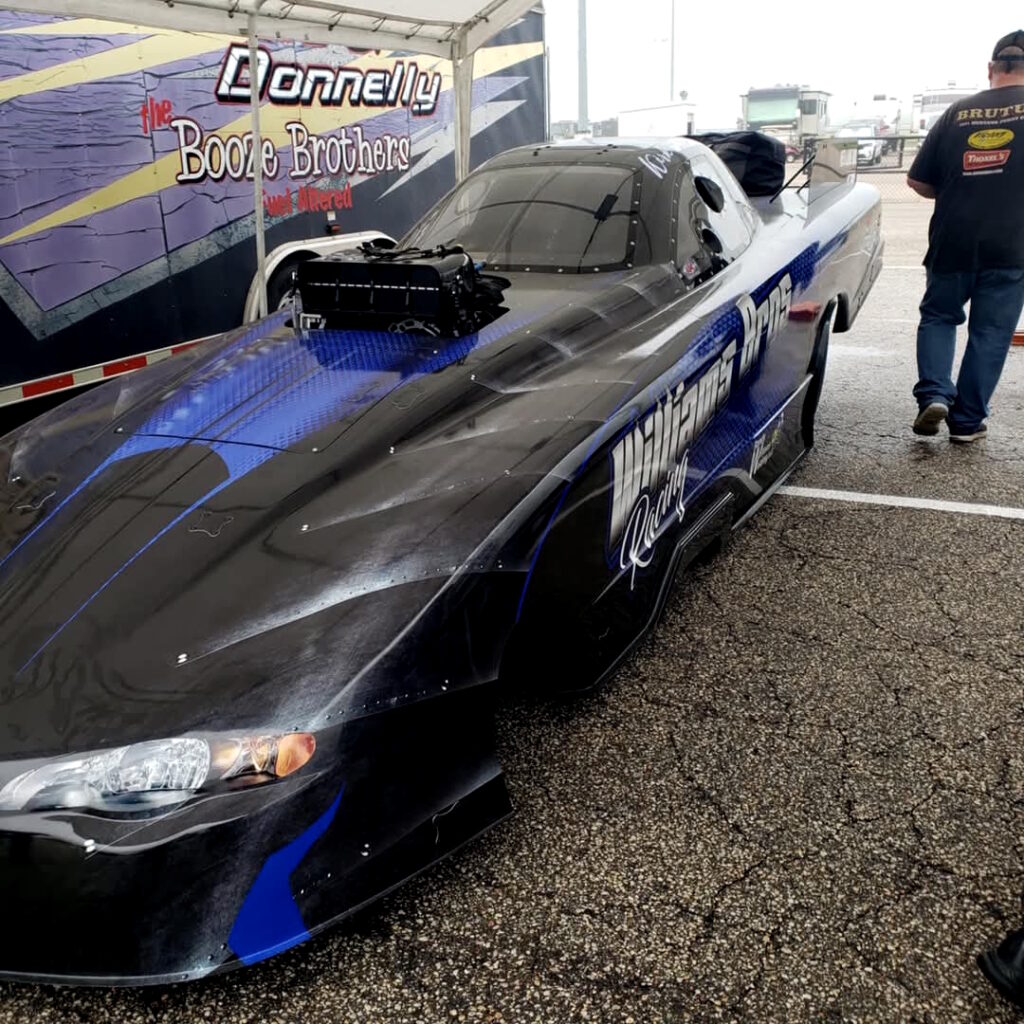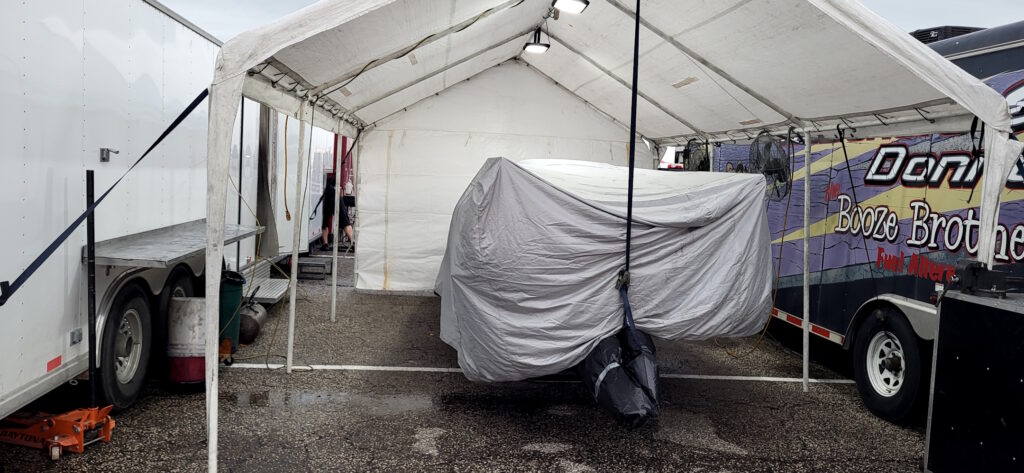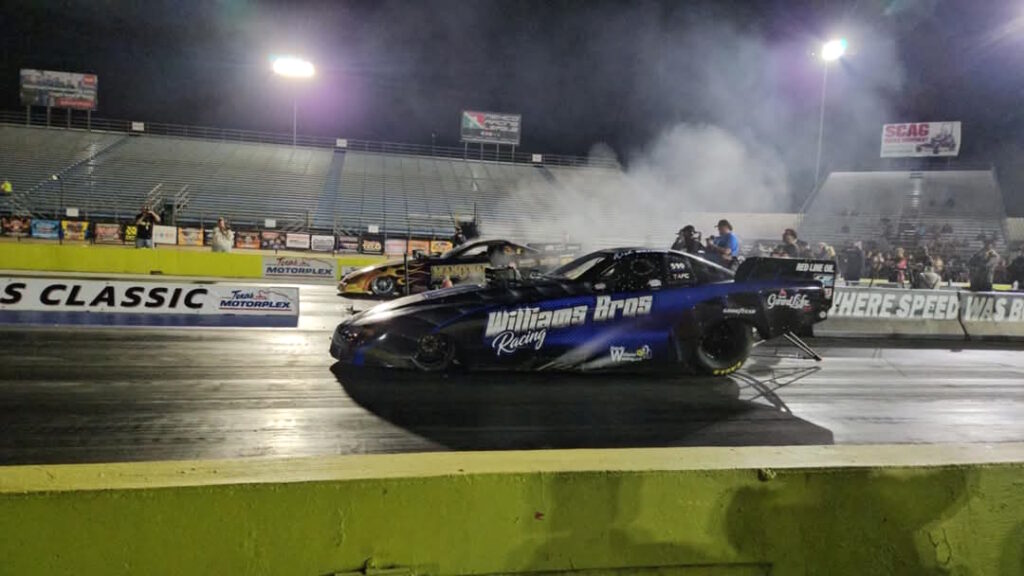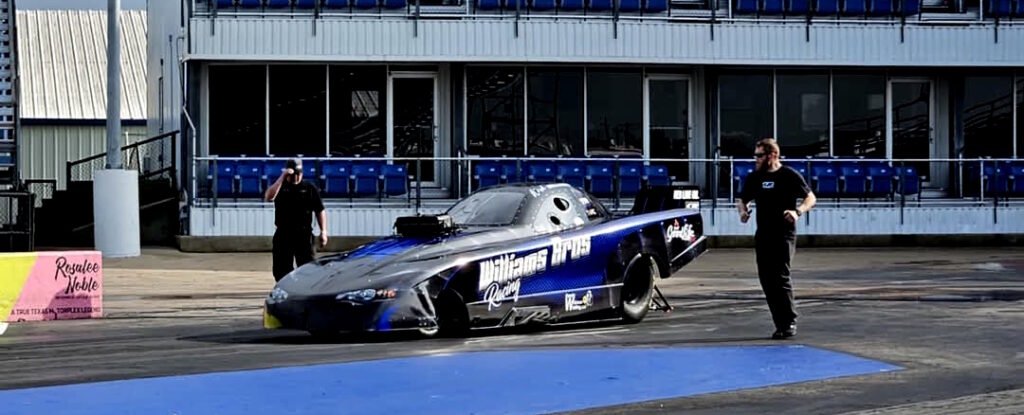The season-opening race was the Chaos Classic, and finally, Mother Nature let us race the new car. After two rainouts, the debut was long overdue. The delay was torture—our team worked tirelessly to get the car ready for the original date, only to have it sit in the shop, untouched, taunting us. We had a secret we couldn’t wait to share with the racing world. The car looked amazing, and thankfully, it performed just as well in its first real outing.
This race marked the true beginning for our new hot rod. Now it was time to make it as fast as it looks. Anyone who’s ever shaken down a new car—whether it’s a fresh build or just new to them—knows how tricky it is to figure out what it takes to go fast.
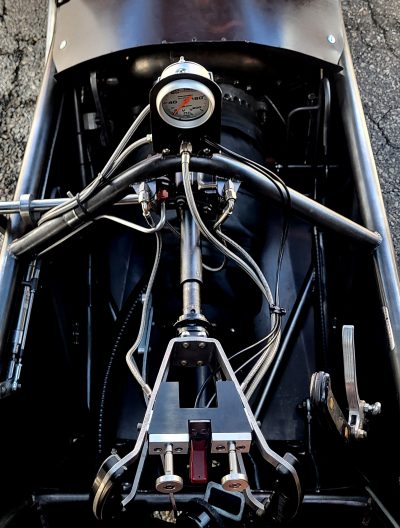
In our case, the car was brand new from front to back—every nut and bolt replaced. We even made a big leap by switching to a FuelTech ignition system. The only things carried over were the engine and transmission. Best of all, this machine was built entirely in-house.
Mother Nature didn’t exactly roll out the red carpet this weekend either. On day one, we were met with fog and a light mist. Thankfully, the skies cleared enough for two test passes. The first pass was a success—the car went straight down the track and laid down a solid 3.76 at 204 mph. On the second, we overpowered the track and knocked the tires off.
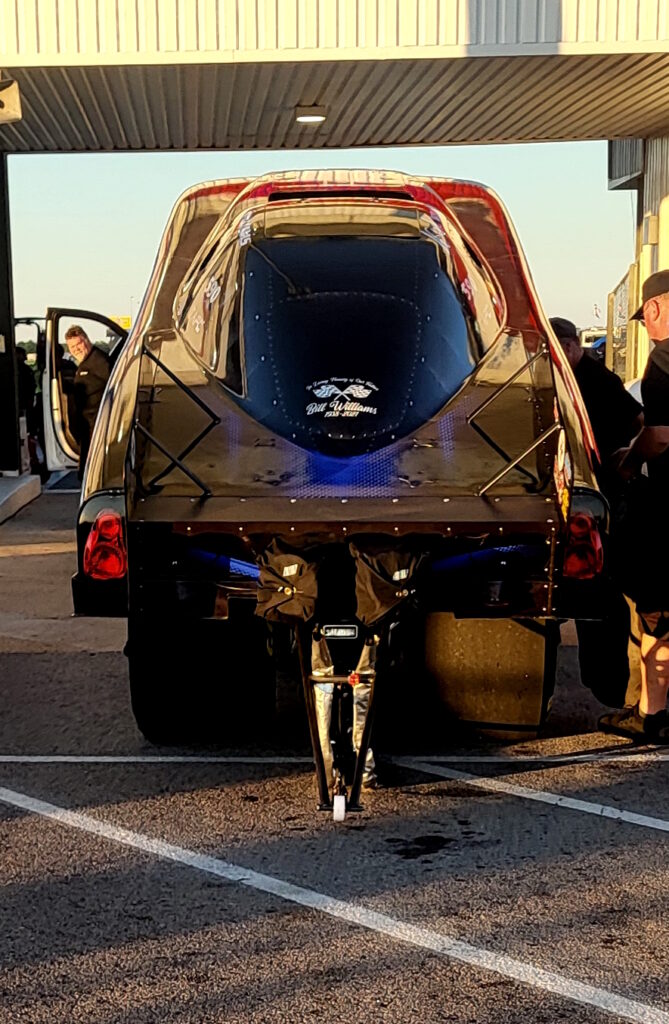
Day two brought more rain, wiping out one of our two scheduled qualifying sessions. We got one shot to make it count, and we did. With a few tweaks from the last pass, the car ran a clean 3.73 at 207 mph. That put us second on the ladder when the session was cut short due to weather. The remaining cars ran their qualifiers Saturday morning.
Day three was finally dry and sunny. The final qualifying session didn’t go our way—we knocked the tires off again at the hit. Back in the pits, we dug into the data and noticed the 2-step wasn’t holding the car at the correct RPM. It was inconsistent—working twice, failing twice. This new feature, added in the offseason with the FuelTech system, was supposed to help us launch harder and more consistently. Now, with first round looming, we had to make a change. We need to get down the track to have a chance to make it past our tough first round opponent.
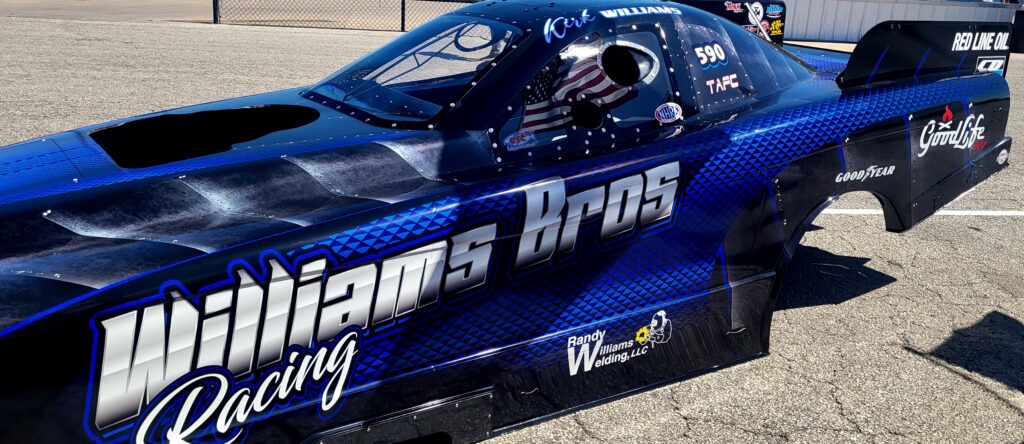
We finished qualified number 5 this would leave us paired with the number 1 qualifier John Hale and the Say It Loud nitro funny car—a tough draw. That car’s capable of low 3.50s. We couldn’t afford to gamble on the 2-step, so we adjusted the setup and sent it.
Round one: Both cars launched, and we left first! The changes seemed to help. We had the early advantage, but Hale’s nitro machine was charging hard. Just before the stripe, it crossed the centerline and took out the cones, handing us the win. No official time, but we were moving on. Reviewing the data back at the trailer, it turned out the 2-step still hadn’t worked—we just got lucky the RPM landed right at launch.
For round two, we made further changes. We were up against Shayne Lawson. Shayne staged first, then Kirk lit the bulb and got on the 2-step. Both cars launched, and Shayne had a big jump at the line. We had the quicker ET, but he took the win light. Still, we ran a 3.70 at 208.22 mph—our best lap yet! And this time, the 2-step finally worked. Now we have a working system—and a real race car again.
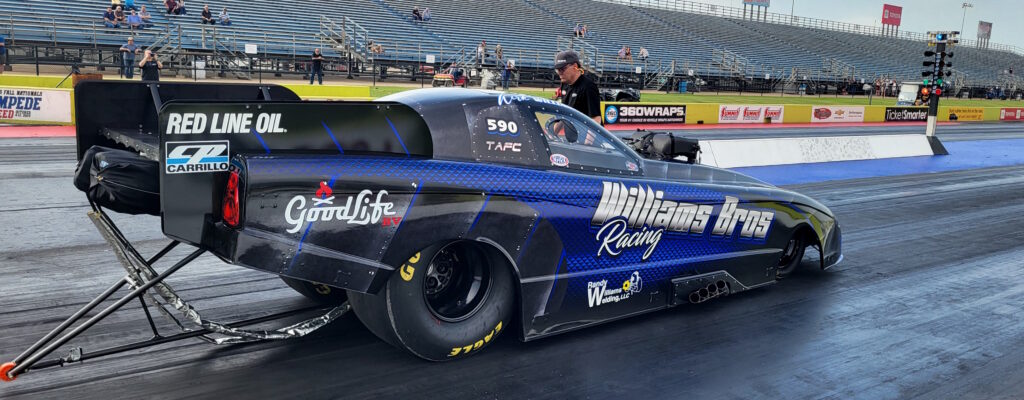
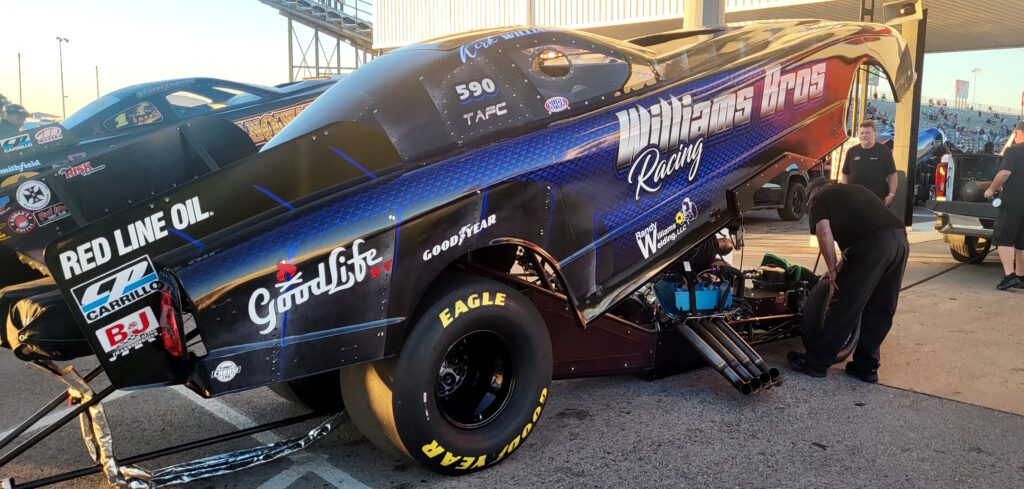
This new car isn’t just an adjustment for Crew Chief Chris—it’s different for Kirk too. It drives incredibly straight—Kirk says it’s the best-driving car he’s had yet (kudos to the build team!). But the brakes and launch procedure are a whole different animal. This car has way more braking power—who knew a 25-year-old master cylinder might not be as good as a new one? That difference, along with the 2-step learning curve, affected reaction times. It’ll take a few more laps and more seat time to get fully dialed in, but when we do—watch out.
This is going to be a great season. Chaos Nation—WBR has one bad hot rod.
